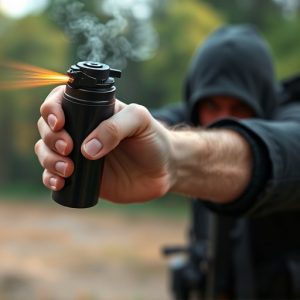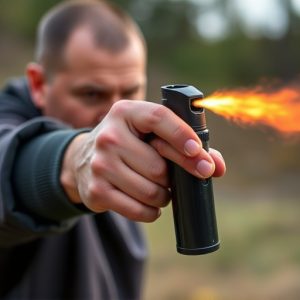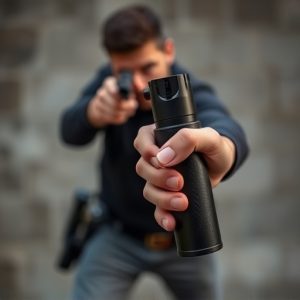Pepper Spray Laws by State: Understanding Equipment Considerations
In the US, Pepper Spray Laws by State vary significantly, impacting public safety and law enforcemen…….
In the US, Pepper Spray Laws by State vary significantly, impacting public safety and law enforcement practices. These laws dictate the use, possession, and distribution of pepper spray, with stringent training requirements in some states like California, while others are more permissive. Understanding these local regulations is crucial for both law enforcement agencies aiming for compliance and citizens seeking to know their rights, ensuring a balanced application of force. When equipping officers, navigating Pepper Spray Laws by State is essential, considering factors like range, accuracy, potency, weight, and comfort for optimal safety and effectiveness in diverse scenarios.
“Discover the essential tools of modern law enforcement with our in-depth look at pepper spray equipment. From understanding the versatile capabilities of pepper spray to navigating the intricate web of Pepper Spray Laws by State, this guide is your comprehensive resource. We explore state-specific regulations, demystifying the legal landscape surrounding this crucial tool. Additionally, we delve into practical considerations when choosing the right gear, ensuring officers are equipped for effective and safe deployment. Get ready to unravel the intricacies of pepper spray equipment.”
- Understanding Pepper Spray: A Comprehensive Overview
- State-Specific Regulations: Pepper Spray Laws by Region
- Equipment Considerations: Choosing the Right Pepper Spray Gear
Understanding Pepper Spray: A Comprehensive Overview
Pepper spray, officially known as oleoresin capsicum (OC) spray, is a non-lethal weapon used by law enforcement and security personnel for crowd control and to subdue resistant individuals. It works by causing severe irritation to the eyes and respiratory system, temporarily disabling the target. Understanding pepper spray involves more than just knowing its effects; it’s crucial to be aware of Pepper Spray Laws by State, as regulations vary widely across different regions in the US.
Each state has its own set of guidelines governing the use, possession, and distribution of pepper spray. Some states, like California, have stringent requirements for training and justification for use, while others are more permissive. Knowing these laws is essential for both law enforcement agencies to ensure compliance and citizens to understand their rights. This comprehensive overview aims to provide a clear picture of how pepper spray is regulated at the state level in the US.
State-Specific Regulations: Pepper Spray Laws by Region
In the United States, pepper spray equipment and its use are subject to a patchwork of state-specific regulations, commonly referred to as Pepper Spray Laws by State. These laws vary widely from one region to another, reflecting diverse perspectives on public safety and law enforcement practices. For example, some states have strict guidelines dictating when and how pepper spray can be deployed, while others have more permissive policies. Understanding these local regulations is crucial for both law enforcement agencies aiming to adhere to the letter of the law and citizens looking to comprehend their rights and the potential consequences of pepper spray use.
Navigating Pepper Spray Laws by State requires a keen awareness of not just the legal framework but also the practical implications on the ground. Law enforcement officers must stay abreast of these changes, as they can impact their equipment choices and deployment strategies. Conversely, citizens should be informed about their rights and the circumstances under which pepper spray might be employed to ensure a balanced and fair application of force in public safety situations.
Equipment Considerations: Choosing the Right Pepper Spray Gear
When equipping law enforcement personnel with pepper spray, several critical considerations come into play. The right gear can significantly impact officer safety and effectiveness in various scenarios. One key aspect is understanding and adhering to pepper spray laws by state, as regulations vary widely across different jurisdictions. This ensures that officers are operating within legal boundaries and using the correct type of spray for their specific needs.
Additionally, the choice of sprayer should consider factors like range, accuracy, and potency. Officers on foot may require a shorter-range, easy-to-aim device for close encounters, while those in vehicles or mounted units might need a more powerful option with greater reach. The size and weight of the sprayer are also essential, especially for prolonged use, ensuring it fits comfortably in an officer’s gear without hindering mobility.
In conclusion, understanding pepper spray equipment and navigating the varying state-specific regulations are paramount for law enforcement agencies to ensure their officers’ safety and compliance. By choosing the right gear and staying informed about local laws, including those related to Pepper Spray Laws by State, departments can maximize the effectiveness of this crucial tool while adhering to legal standards.


